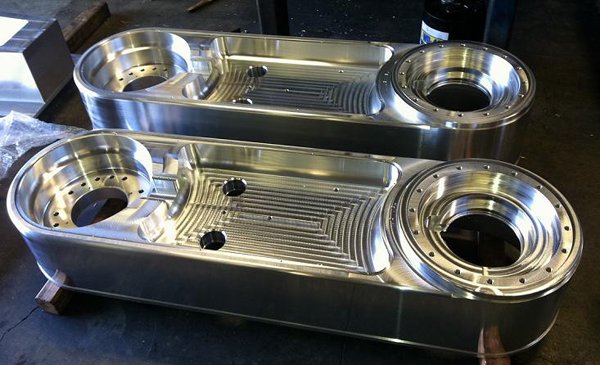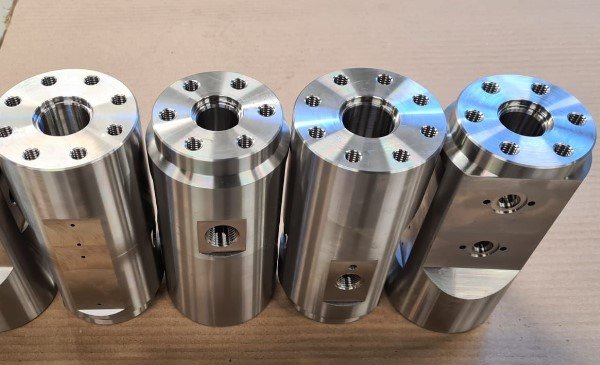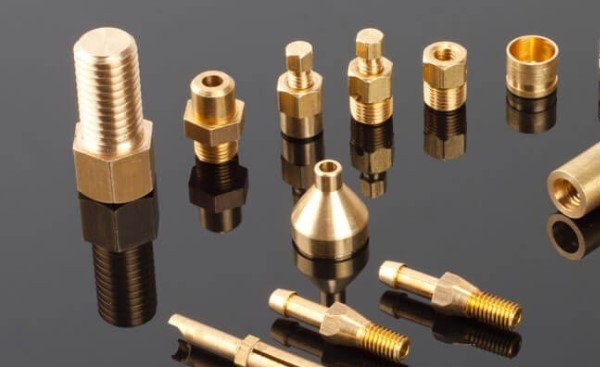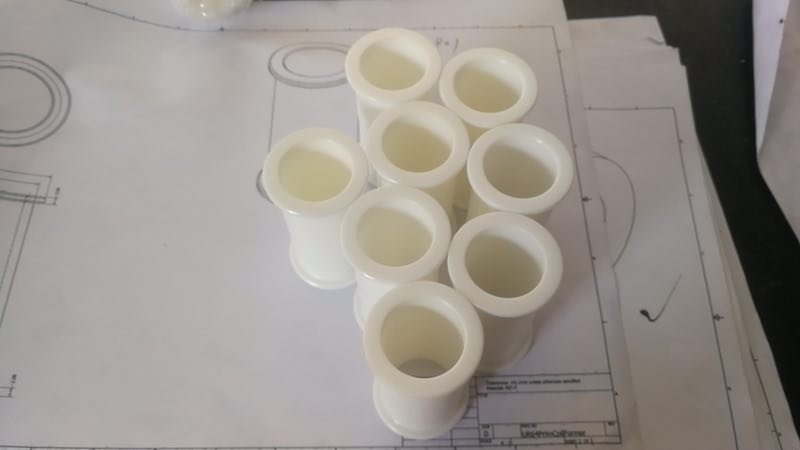CNC Machining Services
We can support you from rapid prototyping to full production. Request a free quote today.
What is CNC Machining?
CNC (Computer Numerical Controlled) machining is a manufacturing process to remove materials using a wide variety of cutting tools to create the final design. Common CNC machines include vertical milling machines, horizontal milling machines, lathes, and routers. Once programmed, CNC machines can execute complex designs with accuracy and repeatability, making them ideal for mass production.
How CNC Machining Works?
CNC machining and fabrication begins with a design being created first. The design is then fed and read by a computer numerical control machine also known as a CNC machine. This type of technique removes material and uses cutting tools to create a real part. The machine has a device or work piece that is used to cut and craft the end result. The sharp cutting tools connect with the work piece to cut away unnecessary material to form the prototype. This is how CNC machining is done. CNC machining is a fast and versatile way of creating plastic and metal parts without the need for expensive tools or equipment. It can be used to create both simple and complex prototypes.
CNC Milling
CNC milling works by using Computerized cutting tools to remove materials from a block of raw materials. There are quite a few steps from creating CAD models to finally executing the program.
This manufacturing process is very versatile with various materials from metals and plastics, and CNC milling parts can reach very high precision +/-.0005 in. Read More


CNC Turning
CNC turning is a subtractive manufacturing process where the bars of materials will rotate, while a cutting tool is placed against the workpiece and take the materials off to create the final finished parts. It’s a very precise and efficient way to make high-quality parts.
And there are many advantages of CNC Turning. Read More
CNC Metal Machining Materials
CNC Machining Plastics Materials
Nylon 6/6 Offers increased mechanical strength, rigidity, good stability under heat and/or chemical resistance.
Teflon has excellent temperature and corrosion resistance, low electrical conductivity, and high wear resistance.
A clear glass-like plastic. Good wear and tear properties, transparent, light weight, and high refractive. Great for outdoor use.
Excellent tensile strength, used as a lightweight substitute for metal in high-temperature, high-stress applications.
Acetal/POM is a type of Resin with good moisture resistance, high wear resistance, and low friction.
A type of High strength engineering plastic with excellent chemical resistance, often used for many commercial products.
What are the Advantages of CNC Machining?
Economical
Invest single time in CNC machine and it will save cost in every single workpiece. Less labor is required and it'll largely reduce the cost and improve business management.
Quick Turnaround
Using the latest CNC machines, our operators can quickly remove large amounts of materials.Shanghai Elue produces highly accurate, quick turn parts in as fast as 1 day.
Highly accurate and repeatable
Our machining centers offer high-precision tolerances ranging from +/-0.001″ – 0.005″, depending on customer specs.
Custom Finishes
You can select from a variety of finishes on solid metal and plastic parts, like anodizing,plating,painting,printing,ect.
Scalability
CNC Machining is perfect for production of 1-10,000 parts. Work pieces are prepared in batches with a single command, instead of every single feed.
Material Selection
Suitable for many different kinds of metal and plastic materials. CNC Machining offers a wide variety of certified materials.
CNC Machining Sizes&Tolerances
| CNC Milling | CNC Turning | |
| Maximum Part Size | 1000×500×400 mm | 200×500 mm |
| 39.37×19.68×15.74 in. | 7.9×19.7 in. | |
| Minimum Part Size | 4×4 mm | 2×2 mm |
| 0.15×0.15 in. | 0.079×0.079 in. | |
| Minimum Feature Size | Φ 0.50 mm | Φ 0.50 mm |
| Φ 0.00197 in. | Φ 0.00197 in. | |
| Standard Tolerances | Metals: ISO 2768-f | Metals: ISO 2768-f |
| Plastics: ISO 2768-m | Plastics: ISO 2768-m | |
| Linear Dimension | +/- 0.025 mm | +/- 0.025 mm |
| +/- 0.001 in. | +/- 0.001 in. | |
| Hole Diameters | +/- 0.025 mm | +/- 0.025 mm |
| (Not Reamed) | +/- 0.001 in. | +/- 0.001 in. |
| Shaft Diameters | +/- 0.025 mm | +/- 0.025 mm |
| +/- 0.001 in. | +/- 0.001 in. | |
| Threads and Tapped Holes | Diameter: Φ 1.5-5 mm, depth: 3×diameter | Diameter: Φ 1.5-5 mm, depth: 3×diameter |
| Diameter: Φ 5 mm or more, depth: 4-6×diameter | Diameter: Φ 5 mm or more, depth: 4-6×diameter |
CNC Machining Finishes
Anodizing is a widely used surface finishing process for CNC machined parts. It involves the electrochemical conversion of the metal surface, resulting in a layer of aluminum oxide that protects and enhances the appearance of the part. This can provide improved corrosion resistance, wear resistance, electrical insulation, and chemical resistance to the machined part. The thickness of this anodic coating can range from few nanometers to up to several microns depending on the application. Anodizing also utilizes color additives to add aesthetic appeal while still providing durable protection. Anodizing provides a long-lasting finish that requires minimal maintenance and helps extend the life of your machined parts. It is important to consider the specific needs of your application when deciding if anodizing is the best choice for your CNC machined part. Properly performed, anodizing provides a finish that is durable and that will maintain its look and performance for many years.
This process involves firing small glass beads of various sizes at the surface of the part to create a matte, textured finish. This can improve the grip of objects and increase their aesthetic appeal while still providing excellent protection against wear and corrosion. Bead blasting also helps reduce reflections significantly, making it a popular choice for parts that will be used in outdoor or brightly lit environments. It should be noted that bead blasting does not provide any additional corrosion protection beyond what is already provided by other finishes such as anodizing or plating. However, it can help extend the life of these surfaces when used in combination with other finishing processes.
Polishing is used to create a smooth, glossy surface on the machined part. It involves using abrasive materials to remove any imperfections and give the surface an attractive shine.
Powder Coating is a type of paint made up of tiny particles which are melted then applied with static electricity or compressed air. This creates a hard finish that is resistant to damage and wear.
Painting involves applying a protective substance to the surface of a part in order to provide coloration and protection from corrosion.
Plating refers to coating metal parts with another metal (usually copper, nickel or chrome) which can improve corrosion resistance.
Black oxide is another popular finishing process used on CNC machined parts. This involves coating steel or iron parts with a black layer of magnetite which provides excellent corrosion protection without altering the piece’s dimensional accuracy. Black oxide can also provide good wear resistance and improved lubricity to help reduce friction during operation. It should be noted that black oxide finishes do not offer any additional protection beyond what can be achieved through other processes such as anodizing or plating, but they can still provide a unique aesthetic appeal to your parts in addition to improved corrosion protection.
CNC Machining Applications
CNC Machining in the Electronics Industry
CNC Machining in Medical Industry
CNC Machining in Automotive Industry
CNC Machining in Aerospace Industry
Why Choose Elue For CNC Machining Services
Production Capabilities
Our state-of-the-art equipment enables us to produce components accurately and efficiently.
Commitment to Quality
We ensure that all parts are held to the highest standards when it comes to precision, accuracy, and strength.
Wide Range of Service
Our CNC machining services include milling, turning, grinding, wire cutting, and also post-processing.
Exceptional Service
Our team is always open to discussing your project needs to determine the best machining solution for you.
Frequently Asked Questions
What materials can be used in CNC machining?
A wide variety of materials can be used in machining processes, including metals such as aluminum, steel, brass and copper. Plastics can also be machined using CNC machinery, with the most common being acrylics, nylon and polycarbonates.
What are the advantages of CNC machining?
CNC machining offers a number of advantages over traditional manufacturing techniques. These include consistent quality and accuracy, ability to produce complex shapes, tight tolerances and repeatability across multiple production runs. Additionally, because it is computer-controlled, CNC machining offers greater flexibility in design modifications compared to manual methods of machining.
What types of shapes can be created by CNC machining?
The types of shapes that can be produced with CNC machines depend on the type of cutting tool used. Common shapes that can be produced include straight and curved lines, spirals and polygonal shapes. CNC machining is also capable of creating complex 3D shapes with intricate details, such as those needed for specialized medical devices or aerospace components.
Does CNC machining require skilled operators?
Yes, while the machines themselves are automated in operation, an operator must have a basic understanding of the technology in order to properly program and monitor the process. Additionally, skilled technicians may be needed for more complex processes such as multi-axis operations.
What are the standard tolerances of CNC machining?
The standard tolerance for CNC machining can vary depending on the type of material being used and the complexity of the job. Generally speaking, most operations will result in a ±0.005 inch tolerance or better when using common materials such as aluminum or steel.
How to reduce the cost of CNC machined parts?
Reducing the cost of CNC machined parts can be achieved by optimizing the design, selecting the most efficient tooling, and using cost-effective materials. Additionally, choosing vendors with experience in CNC machining can help to reduce costs as well.
How does CNC machining compare to 3D printing?
CNC machining is typically used for subtractive manufacturing, where material is removed from a pre-existing block to create the desired shape. 3D printing, on the other hand, works by adding material layer by layer until the part is complete. The type of technology used will usually depend on the complexity and precision required for the job.
What are the limitations of CNC machining?
CNC machining requires close adherence to specific programming instructions in order to achieve desired results, so any changes must be made manually during the setup phase. Additionally, due to the physical nature of machining, there is a limit to the complexity and detail that can be achieved in some materials.Furthermore, complex shapes may require special tooling or longer processing times. Finally, CNC machines require frequent maintenance and recalibration in order to keep them running at peak performance.
How long does CNC machining take?
The speed of the process depends on a variety of factors, such as the complexity of the shape being machined and the type of material used. Generally speaking, most operations can be completed in minutes to hours depending on these variables.
What is the cost of CNC machining?
The cost of CNC machining varies depending on the complexity of the job and the type of material being used. Generally speaking, most operations will range from a few dollars to hundreds or even thousands for more complicated processes. It is important to discuss pricing with your service provider prior to beginning any project.
What types of tools are used in CNC machining?
Common tools used in CNC machining include end mills, drills, reamers, taps and countersinks. Specialized cutting tools can also be used depending on the shape being machined and the type of material being worked with. It is important to select the appropriate tool for each job to ensure optimal results.
Why use CNC machining?
CNC machining offers a number of advantages over manual methods, including greater accuracy and repeatability, improved product quality and faster production times. Additionally, because it is computer-controlled, CNC machining can be used to produce parts with complex shapes that would otherwise be difficult or impossible to create manually. Overall, CNC machining is an efficient and cost-effective way to produce precision parts in large quantities.
What is a CNC machine controller?
A CNC machine controller is the device responsible for executing commands from the computer and controlling the movements of the various axes. It receives instructions from the programming software, and translates them into electrical signals that control each motor in turn, ultimately resulting in precise motion of the cutting tools. The type of controller used will depend on the model of CNC machine being operated.












